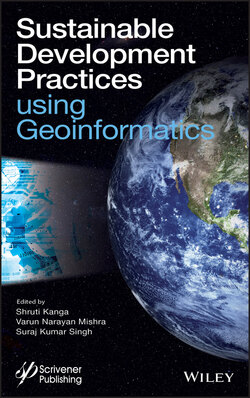Читать книгу Sustainable Development Practices Using Geoinformatics - Группа авторов - Страница 21
1.4.3 Impact of Urban Sprawl on Vegetation Cover
ОглавлениеLULC analysis of temporal imageries clearly shows the impact of urban growth on vegetation cover in the study area. The analyzed remote sensing dataset shows that there is inverse relationship between built-up area and green space. Figure 1.6 shows the amount of changes in green space based on NDVI from 2001 to 2017 through 2011. Moreover, it is also evident from the NDVI images that there is reduction not only in spatial extent of vegetation cover but also there is reduction in overall biomass and chlorophyll as well during the study period. In the year 2001, the NDVI value was ranging from −0.33 to 0.76, while in the year 2011, the lower value is around −0.10 and higher value is around 0.60 and during year 2017 the NDVI is showing lower value of −0.06 and higher value of 0.42. However, there is increase of population density in the central part and radially outward from the city since year 2011 to 2017. Moreover, the temporal NDVI images also shows that there is decrease in vegetation cover as one moves from central part of the city to edges of the study area.
Figure 1.6 NDVI images for the year 2001, 2011, and 2017.
